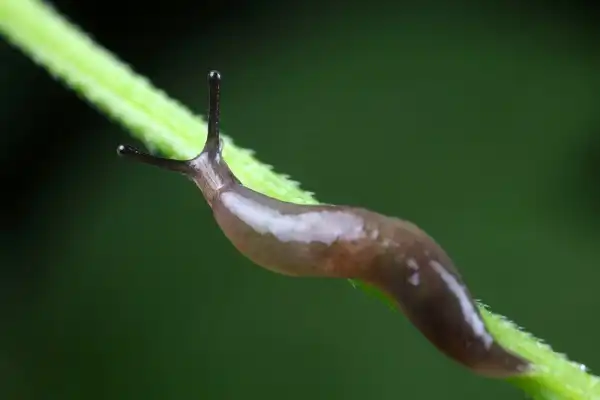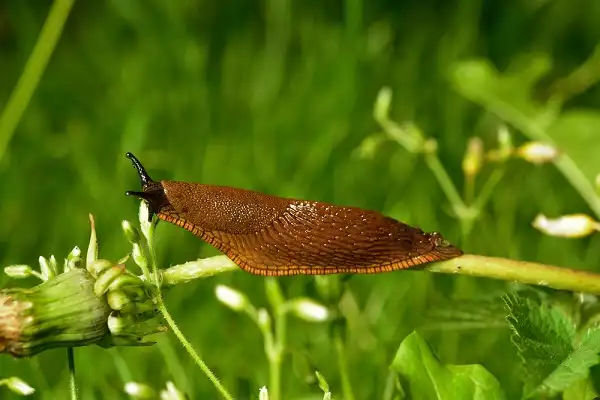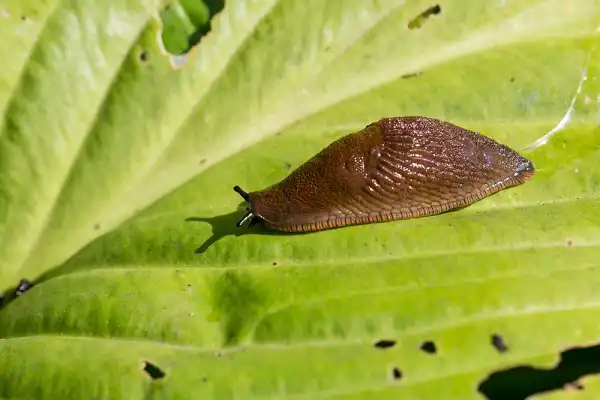Do you often wonder what creature lurks beneath the soil in your garden? While most assume it to be worms, slugs are a far more common presence. Slugs may not look like much but they’re hard workers and important members of their ecosystems – and if you’re lucky, your garden might just be home to them! But there’s so much more to these seemingly unassuming slimy mollusks than meets the eye. So let’s dive into the wondrous world of slugs and get ready to discover some fascinating facts about these homespun heroes!

Slug Description
Slugs are small. Their bodies consist of a head, foot, and sole, with two pairs of retractable tentacles on the top of their heads. They are usually dark in color, ranging from gray to brown or even black, and can be speckled with spots. These creatures are invertebrates, meaning they don’t have spines or bones like vertebrates such as humans do. While most slugs have shells when they’re born, they quickly shed them as they grow older. Instead of relying on shells for protection like other mollusks do, slugs secrete a slimy mucus that helps keep them safe from predators. This mucus also helps reduce friction while they move across surfaces so they can glide gracefully even over rough surfaces like rocks!
Slug Habitat
Slugs inhabit a variety of habitats across the globe, from forests to grasslands and even deserts. They have even been found living in urban environments such as parks and gardens! Slugs are most active at night or during the early morning hours when the temperatures are cooler and there is less risk of desiccation (drying out). During the day, they typically hide in moist hiding places like logs, stones, leaves, or soil. Temperature also plays an important role in slug habitat selection – many species are adapted to live in specific temperature ranges and cannot survive outside them for extended periods of time.
For example, some prefer cooler climates while others prefer warmer ones. In addition, slugs need access to a source of moisture such as soil or water in order to survive. Slugs can also be found living both above ground and below ground depending on their species and environment. Above-ground slugs tend to be more active during wetter months as the moisture allows them easier access to food sources. Below-ground slugs tend to be more common in drier conditions when moisture is scarce. Some species make their homes inside tree trunks while others may construct elaborate burrows underground where they remain hidden from predators and protect themselves from extreme weather conditions.
Slug Diet
Slugs are scavengers and feed mainly on decaying organic matter, such as dead plants and animals. They use their rasping tongues (known as radulae) to scrape food particles off surfaces before digesting them internally through regular ingestion and absorption processes. Slugs may also feed on fungi or lichens depending upon the species and their environment. Their diet also consists of fresh vegetation such as leafy greens, fruits, and vegetables when available. They have even been known to eat living plants in some circumstances! Slugs will often leave a silvery trail behind them, which is caused by the slime they secrete that helps reduce friction while they move across surfaces. This slimy mucus not only helps keep them safe from predators but it also serves to help them locate food sources more easily. In addition to their regular diet of decaying organic matter, slugs also require calcium for shell formation. To get this essential element, slugs will often consume small stones, gravel, or other hard objects which provide tiny amounts of calcium carbonate.

Slug Size
Slug size varies greatly depending on the species and their environment. Most slugs measure between 1 and 8 inches in length, with some of the largest species reaching up to 12 inches long! The body of a slug consists of a head, foot, and sole, with two pairs of retractable tentacles on the top of their heads. Their bodies are usually dark in color, ranging from gray to brown or even black, and can be speckled with spots. Slug size also depends on the availability of food sources in their environment as well as overall temperature levels. For instance, warmer climates tend to favor larger sizes while cooler temperatures often produce smaller slugs.
Slug Lifespan
Slug lifespan varies depending on species and environment. Most land-dwelling slugs can live up to 1 year in the wild, while aquatic species may survive for as long as 5 years. The average lifespan of slugs is 12-18 months. The exact age of a slug depends on its diet and access to food sources, its level of activity, the temperature conditions of its habitat, and the presence of predators in their environment. Slugs that live in warm climates tend to have shorter lifespans than those found in cooler climates. Similarly, slugs living in environments with plenty of food sources are likely to have longer lifespans than those living where food is scarce. Slugs are also susceptible to parasites and diseases which can reduce their life expectancy if not treated properly. Additionally, predation from birds, reptiles, other animals, or humans can significantly shorten their lifespan. In addition to these threats, slugs are vulnerable to extreme weather conditions such as cold temperatures or drought which may limit their access to food sources and cause them to succumb at an earlier age.
Slug Behavior
Slugs exhibit a wide variety of behaviors depending on their environment and the species. Common behaviors include movement, feeding, mating, and communication. Finally, slugs also engage in communication with one another through chemical signals known as pheromones which can be used in a variety of ways including finding mates or marking territorial boundaries. Pheromones are released by special organs located on either side of the slug’s head and can be detected by other nearby individuals through specialized sensory structures called chemosensory organs located on their tentacles. Overall, slugs exhibit fascinating behaviors that help them survive in their various environments!

Slug Speed
Slug speed is a fascinating topic of study. Generally, slugs are slow-moving creatures, due to the slimy mucus they secrete which serves to reduce friction while moving across surfaces. However, there is great variation among slug speeds depending on species and environment. Some species of slugs can move surprisingly quickly when disturbed or threatened. Certain land-dwelling species such as the Leopard Slug (Limax Maximus) have been known to reach speeds of up to 9 miles per hour when startled or chased! Aquatic slugs may not move quite as fast, but some of them can still swim at speeds up to 1 mile per hour. The speed of a particular slug may also depend on its size and weight – usually larger individuals are slower than smaller ones due to their increased mass.
Slug Hunting
Slug hunting is a practice that has been around for centuries, particularly in parts of Europe and Asia. While some people hunt slugs as a food source, others simply enjoy the challenge of tracking them down. Slug hunters generally use different techniques and tools when catching these mollusks. Commonly used tools include tongs or tweezers which are used to pick up the slug without getting too close to its slimy body; hand-held nets which are great for capturing several slugs at once; and even special traps designed with bait to lure the slugs into capture! After being caught these creatures can either be released back into their environment or kept as pets – depending on your preference! Overall, slug hunting can be both fun and rewarding! It’s an activity that teaches us about an interesting creature while providing us with insight into their behavior and habits – making it an enjoyable pastime for all kinds of bug aficionados!

Conclusion
Slugs are fascinating creatures that exhibit a variety of interesting behaviors. From their movements and feeding habits to mating rituals and communication – these slimy mollusks have much to teach us! Additionally, slug hunting can be an enjoyable pastime for those looking for a challenge or wanting to explore the behavior of these intriguing creatures. So the next time you come across one of these slow-moving critters, take some time to admire its unique features and behaviors – it might surprise you with just how remarkable slugs can be!
Frequently Asked Question


